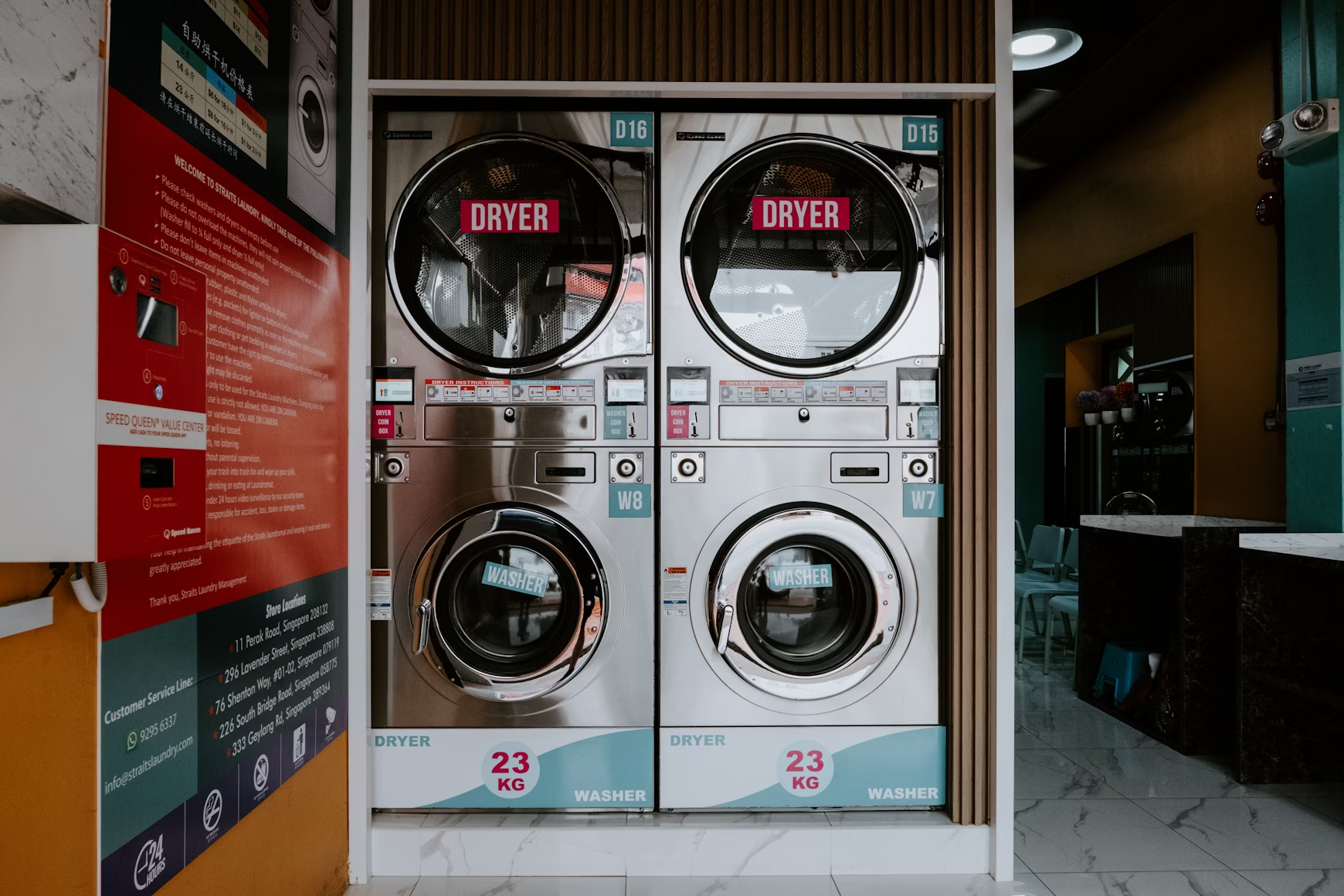Running a successful laundromat starts with investing in the right commercial-grade equipment. These machines are the backbone of your business, handling hundreds of loads per week while keeping energy and maintenance costs under control. Choosing the right mix of washers, dryers, and support systems can improve customer satisfaction, reduce downtime, and maximize profit.
Types of Commercial Laundry Machines
Laundromats rely on a balanced mix of washers and dryers, often in multiple sizes to accommodate different customer needs. High-capacity machines help handle large comforters, while smaller machines allow for fast turnaround. It’s important to understand the categories before making purchasing decisions.
- Top-Load Washers: Less common in modern laundromats, but still used for their simplicity and affordability
- Front-Load Washers: Energy-efficient and customer-preferred, available in 20–100 lb capacities
- Stacked Washer/Dryer Combos: Save space while allowing multiple customers to wash and dry simultaneously
- Single-Tumble Dryers: Standard commercial dryers, typically ranging from 30 to 75 lbs
- High-Capacity Dryers: Best for oversized loads, comforters, or commercial accounts
Washer Size Recommendations
Offering a range of washer sizes helps meet the needs of individuals and families alike. Machines should be clearly labeled, easy to load, and capable of handling both light and heavy-duty cycles. Larger machines are often more profitable due to higher price points and greater efficiency.
- 20–30 lb machines: Good for single loads or individuals
- 40–60 lb machines: Ideal for families or shared loads
- 80–100+ lb machines: Designed for bedding, rugs, and commercial clients
- Mix small and large machines evenly based on anticipated customer traffic
- Higher-capacity washers tend to generate the most revenue per square foot
Dryer Considerations
Dryers are just as important as washers, and their performance affects total cycle time and customer satisfaction. Fast-drying, well-ventilated dryers reduce wait times and energy costs. Providing a mix of sizes gives customers flexibility while improving turnover.
- Choose dryers with moisture sensors to prevent over-drying
- Consider stackable units to maximize floor space
- Ensure proper airflow and venting to maintain efficiency
- Match dryer capacity to washer output for balanced flow
- Larger dryers help accommodate bulk items and commercial accounts
Key Features to Look For
Today’s commercial laundry equipment comes with advanced features that benefit both owners and customers. From digital controls to energy monitoring, investing in upgraded machines can improve operations and increase revenue. Look for durable, easy-to-maintain machines with modern technology.
- Digital payment integration: Accept credit cards, loyalty cards, or app payments
- Programmable cycles: Customize wash options based on customer preferences
- Energy efficiency ratings: Lower utility costs through water and heat savings
- Remote diagnostics: Identify issues quickly with machine monitoring systems
- Stainless steel drums: Resist rust and wear over time
Top Commercial Equipment Brands
Choosing a reliable manufacturer reduces maintenance issues and provides better support over time. Leading brands offer robust warranties, parts availability, and proven performance in high-volume environments. Always compare specifications, reviews, and service networks before making a purchase.
- Speed Queen: Known for durability and industry-leading digital payment systems
- Dexter Laundry: Offers high-efficiency machines with flexible cycle programming
- Huebsch: Reliable and user-friendly, popular with independent laundromats
- Continental Girbau: High-performance and efficient commercial washers and dryers
- Maytag Commercial: Well-known brand with competitive pricing and strong support
Supporting Equipment and Infrastructure
Beyond washers and dryers, successful laundromats need proper infrastructure to support smooth operations. These elements may not generate revenue directly, but they contribute significantly to the customer experience and long-term maintenance efficiency.
- Change machines or app-based kiosks for easy payments
- Laundry carts and folding tables for convenience
- Soap vending machines to increase ancillary sales
- Security cameras and bright lighting for customer safety
- Efficient water heaters and HVAC systems to control operating costs
Buying New vs. Used
Deciding between new and used equipment depends on your budget, risk tolerance, and long-term goals. New machines come with warranties and updated features, but used machines can be significantly more affordable. Make sure to inspect used equipment thoroughly and factor in potential repair costs.
- New equipment offers warranty protection and better energy efficiency
- Used machines may reduce startup costs by 30–50%
- Consider refurbished options from reputable dealers
- Always test used equipment before purchase
- Calculate total cost of ownership, not just upfront price
Maintenance and Lifespan
Commercial laundry machines are built for heavy use, but regular maintenance is essential to keep them running efficiently. A preventative maintenance schedule reduces unexpected downtime and extends the lifespan of your investment. Most commercial machines last 10–15 years with proper care.
- Clean lint traps and drain systems weekly
- Inspect hoses, seals, and coin mechanisms monthly
- Perform deep cleans and recalibrations quarterly
- Schedule professional servicing annually
- Track repairs and maintenance in a log or POS system
Conclusion
Investing in the right commercial laundromat equipment is a foundational step in creating a profitable, customer-friendly business. The right mix of machine sizes, features, and supporting tools can boost efficiency, increase revenue, and improve the overall experience. With smart planning and ongoing maintenance, your equipment can serve as a long-lasting, high-performing asset that drives your business forward.








